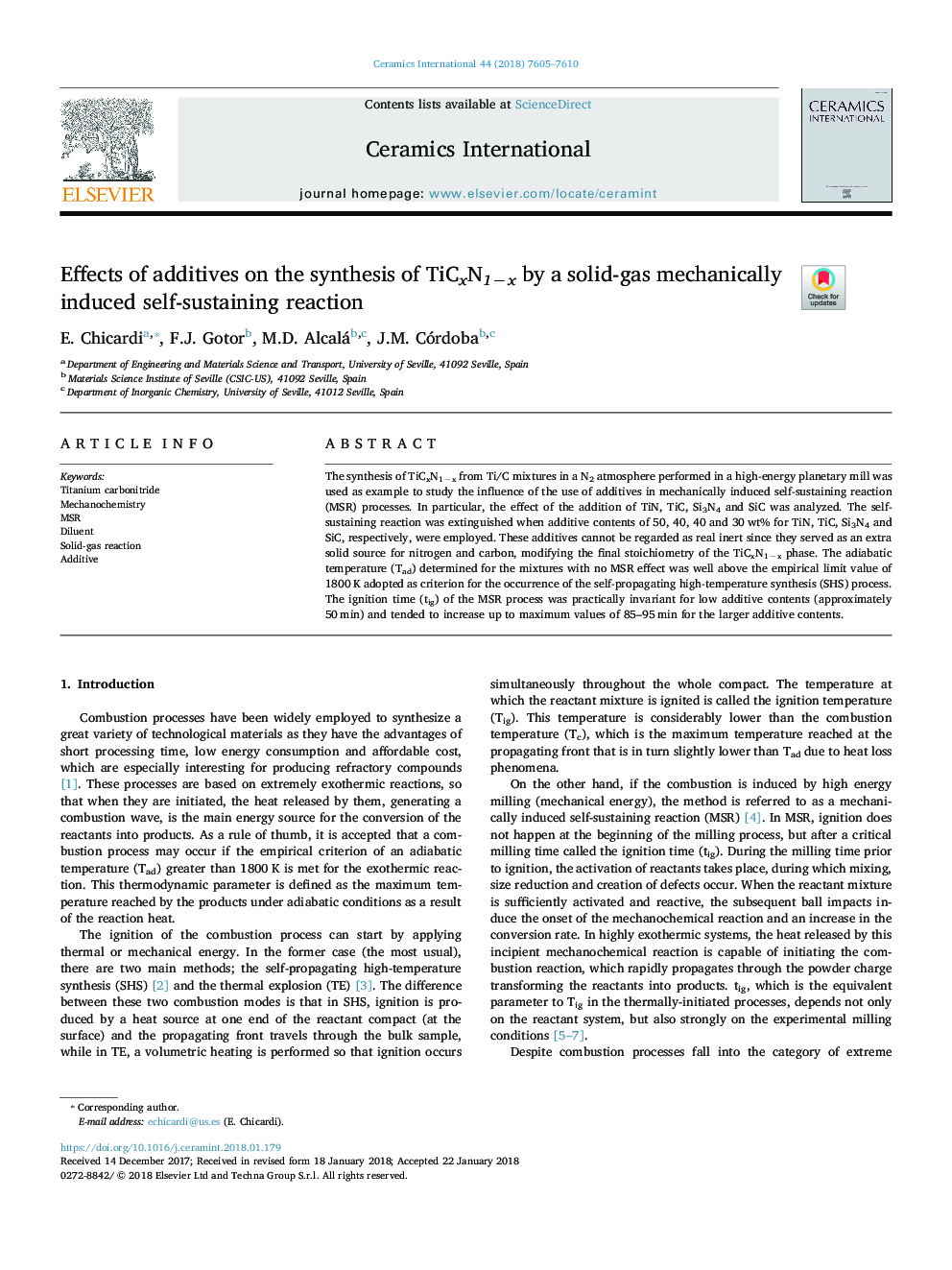| Article ID | Journal | Published Year | Pages | File Type |
|---|---|---|---|---|
| 7887551 | Ceramics International | 2018 | 6 Pages |
Abstract
The synthesis of TiCxN1âx from Ti/C mixtures in a N2 atmosphere performed in a high-energy planetary mill was used as example to study the influence of the use of additives in mechanically induced self-sustaining reaction (MSR) processes. In particular, the effect of the addition of TiN, TiC, Si3N4 and SiC was analyzed. The self-sustaining reaction was extinguished when additive contents of 50, 40, 40 and 30â¯wt% for TiN, TiC, Si3N4 and SiC, respectively, were employed. These additives cannot be regarded as real inert since they served as an extra solid source for nitrogen and carbon, modifying the final stoichiometry of the TiCxN1âx phase. The adiabatic temperature (Tad) determined for the mixtures with no MSR effect was well above the empirical limit value of 1800â¯K adopted as criterion for the occurrence of the self-propagating high-temperature synthesis (SHS) process. The ignition time (tig) of the MSR process was practically invariant for low additive contents (approximately 50â¯min) and tended to increase up to maximum values of 85-95â¯min for the larger additive contents.
Related Topics
Physical Sciences and Engineering
Materials Science
Ceramics and Composites
Authors
E. Chicardi, F.J. Gotor, M.D. Alcalá, J.M. Córdoba,
